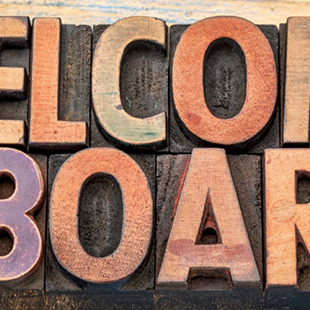Communication
Information needs to be shared, not only at the start of a project, but continuously throughout its duration.
Clarity
PR works best when there is clarity about what it should achieve and when this is communicated to all parties involved. Think of your agency as part of your own in-house team, complementing your strengths and contributing valuable expertise to help you achieve your goals.
Trust
Working with a PR agency needs to be an open and honest process built on mutual respect and trust.
The briefing process is one of the most important steps towards making sure your work with an agency is successful and enjoyable.
A good briefing should include both written material and face-to-face discussion, to ensure that your agency understands exactly what you’re looking for and any background factors that need to be taken into account.
Your briefing should include:
- What you want to achieve
- Who you want to communicate with
- Your priority messages and ideas
- Any relevant background
- Your budget
Before starting on activity, it’s important to get together and establish some essentials.
Strategy
You may already have a PR strategy in place. Or you might want to work with your agency to define what you want to achieve and why. Taking a strategic approach will help you target your activities more closely to make sure they produce the right results.
Activity plan
Whether your PR activity takes the form of one short-term campaign or a long-term programme, you will need a plan of what needs to take place, and when, to achieve the best results. There’s no point expecting coverage in a monthly magazine if you haven’t approached them in line with their publication schedule, for example. You will need to work with your agency to plot all key dates and make sure all activity is scheduled in at the right time.
Responsibilities and approval processes
Before any activity begins, it’s important to work out who will be responsible for different areas of work. Setting this information out in advance will save confusion later.
Your agency team is likely to draft materials such as press releases, case studies, statements and briefings on your behalf. Make sure the process for approving these materials is clear and straightforward. Delays could result in opportunities being lost, so think about who really needs to have final say and who can deputise when needed.
Clear and regular communication is vital to your partnership with your PR agency – just as within your own office.
Sharing information
Copy your agency team on emails and pick up the phone to keep them posted on the latest developments. That way, you can be sure that the work they do for you will fully reflect your current priorities. They will be happy to sign a confidentiality agreement to cover any sensitive information.
Meetings, feedback and reporting
You will need to decide with your agency team how often they report back to you on their activity and its results. This will be dictated to some extent by the size and duration of the project. On a shorter project requiring intense activity, detailed weekly reports and regular meetings might be required. Other campaigns, where activity is spread over longer periods, might only require monthly reports, with additional updates and meetings at busy times.
Let your agency know your thoughts on how it’s going, and how the results are being received internally, as you go through. Don’t leave it until the end of the project – be honest about the positive, and the negative, along the way, so they can adapt things if necessary.
Any good PR agency will want its work to have the desired effect. Make sure your agency is clear about what you want to achieve before they start and catch up regularly to check you’re all on the right track.
It’s always a good idea to meet to review progress face-to-face. That way, any questions can be cleared up and next steps established quickly.
Evaluation
Evaluation should be tailored to your project and reflect your communications priorities. Is your campaign meeting the objectives you set for it? Are you getting the right messages across to the right audiences? Are your communication methods the most suitable ones for your purposes?
Analysing media coverage will be an important part of most campaign evaluations. This may cover things like:
- Circulation
- Inclusion of key messages
- Tone (positive, negative or neutral)
- Whether spokespeople are quoted
- Whether case studies are used
- Inclusion of URL or contact details
But it’s also important to look beyond the coverage and think about the outcomes it, and other aspects of the PR activity, have delivered for you. For instance, has recognition of your brand increased from a previous benchmark? Have you received a greater number of volunteer enquiries, or increased traffic to your website? Has a potential stakeholder been more receptive to your calls, or has a new partnership been formed? It’s important to invest some time and effort in following threads through, during and after the project, to judge where PR has played a part and then communicate that widely – internally and with your agency – so everyone can see the value of the work that’s been done, and seize new and emerging opportunities.




